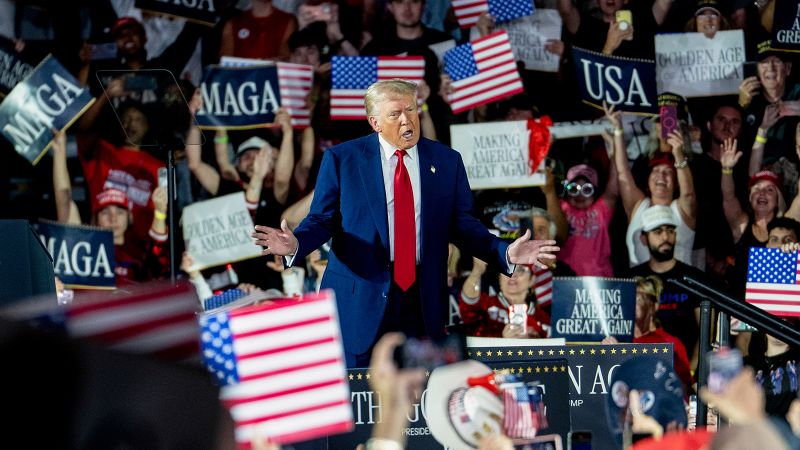The planning for a potential military parade intended to celebrate President Donald Trump’s birthday in June has emerged, revealing ambitious proposals involving significant military presence. According to documents obtained by The Associated Press, the Army plans to deploy over 6,600 soldiers, at least 150 vehicles, 50 helicopters, and several bands, along with a notable turnout of civilians. These extensive arrangements underscore the intention behind what is envisioned as part of the Army’s 250th birthday festivities on the National Mall.
These planning documents, dated April 29 and 30, have not been disclosed to the public but detail the Army’s ongoing preparations for the birthday celebration, which has been part of discussions for an extended period. The idea of a substantial military parade, one that Trump has long advocated, is still under discussion. However, the lack of finalized plans indicates that discussions around the logistics, approval, and cost implications are still unfolding.
Although specific cost estimates have not been released, it is suggested that organizing a parade of this magnitude would incur tens of millions of dollars. The financial burden would stem from transporting military resources and personnel from various locations across the country to Washington D.C., as well as the logistical needs for housing and feeding thousands of service members. The substantial financial commitment has, in the past, derailed similar efforts, particularly during Trump’s initial term, leading to concerns about the wear and tear on city infrastructure due to the heavy vehicles participating in the parade.
Concerns about infrastructure damage have also been voiced by city officials who worry about the potential impacts of these military vehicles on roads in Washington D.C. An Army spokesman, Steve Warren, affirmed that decisions regarding the proposed parade have yet to be finalized. Another spokesman, Col. Dave Butler, expressed enthusiasm over the plans, highlighting the want to create an event that the entire nation can join in celebrating. Butler emphasized the importance of Americans recognizing their Army and soldiers, suggesting that the parade could be a valuable addition to the planned festivities.
Those familiar with the planning documents indicated they reflect the Army’s preparations while awaiting a nod of approval from the White House for the parade. As of now, no formal approval exists, though it is expected that further modifications to the plan will arise in the ensuing weeks. Challenges ahead include the logistics of transporting military equipment and personnel, with some resources likely needing to be transported either by plane or train.
The Army’s plans also include a variety of other celebratory activities and exhibits on the National Mall, such as fitness competitions, climbing walls, and displays featuring numerous military vehicles. Should the parade be included, it would significantly amplify the scale of participation and resources, anticipating that as many as 6,300 service members would march, while others would provide necessary support services.
Initially, the Army did not consider a parade as part of its 250th birthday celebration on June 14. However, interwoven with the festivities is the coinciding of Trump’s 79th birthday, leading officials to entertain the idea of integrating a parade into the celebration. Plans dictate that the parade will not only spotlight the Army’s historical contributions over 250 years but also feature soldiers from various corps and divisions, potentially incorporating heavy equipment such as Stryker vehicles and tanks.
The parade is slated to include participation from army bands, parachutists from the Golden Knights, along with civilian elements such as historical vehicles and aircraft, and representation from veterans’ groups and military colleges. The arrangement considers the event a national special security initiative, necessitating a review by the National Park Service.
Following the parade, a concert and fireworks display are expected to cap off the evening’s festivities. While the planning documents reveal an extensive outline, they also flag concerns around logistical requirements, such as troop accommodations and security stipulations as equipment enters the city. The participation of different military units remains an uncertainty that needs to be addressed.
This renewed discussion around a military parade comes after Trump’s dissatisfaction with earlier proposals, largely due to exorbitant costs and logistical complications observed from previous events, notably one he witnessed in France. Ultimately, his vision for a grand celebration has not remained stagnant; rather, it has revived amidst fresh planning efforts linking the Army’s historical celebration and his birthday.
D.C. Mayor Muriel Bowser indicated that the administration has engaged with the city regarding the potential for a parade bridging Virginia and Washington across the Potomac River. While she acknowledged the discussions, she raised eyebrows about using heavy military vehicles in the city, highlighting the anticipated consequence of road damage and the necessity for funds to address those repairs.
The balancing act between creating a compelling celebratory atmosphere and managing the logistical challenges—especially concerning military displays—remains an ongoing dialogue as preparations continue. In 2018, the Pentagon acknowledged these infrastructural concerns, suggesting regulations that restricted heavy vehicle participation to minimize potential damage. As plans progress, the integration and management of this parade could illustrate the complexities entwined with national celebrations.



